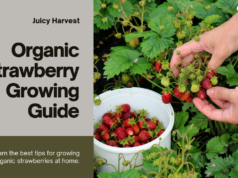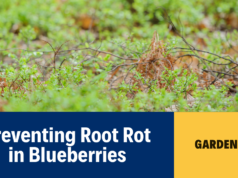
Welcome to our expert guide on cultivating cantaloupe in your garden! Whether you’re a seasoned gardener or a beginner, we’re here to provide you with all the tips and advice you need to grow delicious cantaloupes right at home. Cultivating cantaloupe in your garden can be a rewarding experience, and with our expert tips, you’ll be well on your way to a bountiful harvest. So, grab your gardening tools and let’s get started!
Key Takeaways:
- Learn how to select the perfect cantaloupe seeds for successful cultivation.
- Understand the ideal growing conditions, including temperature, sunlight, and soil requirements.
- Follow step-by-step instructions for planting and caring for your cantaloupe plants.
- Discover proper watering and fertilizing techniques to ensure healthy growth.
- Manage pests and diseases effectively to protect your cantaloupe plants.
In the upcoming sections, we’ll delve into each aspect of cultivating cantaloupe in detail. By the end of this guide, you’ll have the knowledge and confidence to grow your own juicy and sweet cantaloupes right in your garden. So, let’s dive in and unlock the secrets to successful cantaloupe cultivation!
Selecting the Perfect Cantaloupe Seeds.
When it comes to cultivating delicious cantaloupes in your garden, selecting the perfect seeds is crucial. High-quality cantaloupe seeds will ensure that you have healthy, productive plants that yield sweet and juicy fruits. Here are some expert tips to help you choose the best seeds for a successful harvest.
1. Consider the Variety
There are many different cantaloupe varieties available, each with its own unique flavor profile, texture, and growing characteristics. Consider factors such as size, sweetness, and disease resistance when selecting a variety that suits your preferences and local growing conditions.
2. Buy from Reputable Sources
When purchasing cantaloupe seeds, it’s important to buy from reputable sellers. Look for trusted seed companies or nurseries that specialize in high-quality vegetable seeds. This will ensure that you get reliable and authentic seeds that are true to their variety.
3. Check for Seed Quality
Before purchasing cantaloupe seeds, inspect them for quality. Good seeds should be plump, firm, and free from damage or signs of mold. Avoid seeds that appear shriveled, cracked, or discolored as they may have lower viability and germination rates.
4. Examine the Seed Packet
The seed packet contains valuable information about the cantaloupe variety and its specific growing requirements. Read the packet carefully to ensure that the variety is suitable for your climate, soil, and available space. It will also provide you with important sowing and planting instructions.
Expert Tip: Opt for organic or non-GMO cantaloupe seeds whenever possible. These seeds are produced without the use of synthetic chemicals or genetic modification, resulting in a more sustainable and natural approach to gardening.
5. Consider Disease Resistance
Cantaloupes are susceptible to certain diseases like powdery mildew or bacterial wilt. To minimize the risk of plant diseases, choose varieties that have good resistance to common diseases in your area. This will help ensure that your plants stay healthy and produce abundant fruits.
6. Plan for Succession Planting
To extend your harvest and enjoy a steady supply of fresh cantaloupes, consider succession planting. This involves sowing seeds at staggered intervals to ensure a continuous crop throughout the growing season. Choose varieties with different maturity dates to stagger your harvests and prolong the enjoyment of homegrown cantaloupes.
By carefully selecting high-quality cantaloupe seeds, you’ll give yourself the best chance of success in cultivating these flavorful fruits in your garden. Remember to follow the instructions provided with the seeds and provide the necessary care and attention to your plants for a bountiful harvest.
Understanding the Ideal Growing Conditions for Cantaloupe.
To ensure optimal growth and yield, it is crucial to provide the ideal growing conditions for your cantaloupe plants. By understanding the key factors that contribute to their success, you can cultivate healthy and flavorful cantaloupes in your garden.
Temperature
Cantaloupes thrive in warm weather, preferring temperatures between 70°F and 85°F (21°C and 29°C). They are sensitive to frost, so it’s important to plant them when the danger of frost has passed. If you live in a colder climate, consider using row covers or planting them in raised beds to protect them from chilly temperatures.
Sunlight
Cantaloupes are sun-loving plants and require full sun exposure to thrive. Make sure to select a location in your garden that receives at least 6 to 8 hours of direct sunlight daily. Adequate sunlight ensures vigorous growth, sweet flavor development, and abundant fruit production.
Soil
Well-draining soil is essential for cantaloupe cultivation. The soil should be rich in organic matter and have a pH level between 6.0 and 6.8 to provide optimum conditions for nutrient absorption. Conduct a soil test to assess its fertility and make necessary amendments, such as compost or aged manure, to improve soil texture and fertility.
Ensure that your soil has good moisture retention capabilities, as cantaloupes require consistent moisture levels throughout the growing season. Mulching around the plants with organic materials like straw or wood chips can help retain moisture and suppress weeds.
| Key Growing Conditions | Optimal Range |
|---|---|
| Temperature | 70°F – 85°F (21°C – 29°C) |
| Sunlight | 6 to 8 hours of direct sunlight daily |
| Soil pH | 6.0 – 6.8 |
| Soil Drainage | Well-draining |
| Soil Moisture | Consistently moist |
Providing these ideal growing conditions will give your cantaloupe plants the best chance to flourish and produce delicious fruits. With proper care and attention, you’ll be rewarded with a bountiful harvest of juicy and sweet cantaloupes.
Planting and Caring for Cantaloupe.
Once you have selected the perfect cantaloupe seeds, it’s time to start planting and caring for your cantaloupe plants. Follow these step-by-step instructions to ensure successful growth and a bountiful harvest.
Step 1: Prepare the Soil
Before planting cantaloupe seeds, prepare the soil by tilling it to a depth of 8-12 inches. Remove any weeds or large rocks that may obstruct the growth of the plants. Cantaloupes thrive in well-draining soil rich in organic matter.
Step 2: Planting Seeds
Plant cantaloupe seeds after the last frost date for your region. Create mounds or hills in the soil about 2 feet apart to provide good drainage. Plant 4-6 seeds per hill, placing them 1 inch deep. Ensure proper spacing between hills to allow for healthy growth.
Step 3: Care and Maintenance
Caring for your cantaloupe plants involves regular watering, weed control, and providing support for the vines as they grow.
- Watering: Keep the soil consistently moist but not waterlogged throughout the growing season. Water at the base of the plants, avoiding wetting the leaves. Consider using a soaker hose or drip irrigation to promote efficient water usage.
- Weed Control: Regularly remove weeds from the vicinity of your cantaloupe plants to prevent competition for nutrients and resources. Apply a layer of mulch around the plants to suppress weed growth and maintain moisture.
- Supporting Vines: As the cantaloupe vines grow, gently guide them onto a trellis or provide support to prevent them from trailing on the ground. This encourages air circulation and reduces the risk of diseases.
Step 4: Pest and Disease Management
Cantaloupes are susceptible to certain pests and diseases, but with proper management, you can minimize damage and protect your plants.
“By monitoring your plants regularly and taking prompt action against pests and diseases, you can ensure the health and productivity of your cantaloupe crop.”
Inspect your plants regularly for signs of pests such as aphids, beetles, or spider mites. Identify the pests accurately and take appropriate measures to control their population, such as using organic insecticidal soaps or neem oil.
Implement preventative measures by practicing crop rotation and maintaining proper plant spacing to minimize the risk of diseases such as powdery mildew or bacterial wilt. Remove and destroy any infected plants to prevent the spread of diseases.
Step 5: Harvesting Cantaloupe
Harvesting cantaloupe at the right time is crucial for optimal flavor and sweetness. Cantaloupes are ripe and ready to be harvested when they have a strong aroma, the color of the rind turns creamy, and the stem easily separates from the fruit when gently twisted or pulled.
Use a sharp knife or garden shears to cut the fruit from the vine, leaving a short stem attached. Place harvested cantaloupes in a cool and ventilated area to continue ripening, if needed.
Now that you know how to successfully plant and care for cantaloupe, you’re one step closer to enjoying the sweet and refreshing taste of your own homegrown fruit. Keep following the expert tips and advice in this article to ensure a thriving cantaloupe harvest.
Watering and Fertilizing Cantaloupe.
Proper watering and fertilizing techniques are essential for promoting healthy growth and maximizing the flavor of your cantaloupe. By following these guidelines, you can ensure that your plants receive the right amount of water and nutrients to thrive.
Proper Watering Techniques
Cantaloupe plants require consistent and adequate moisture to develop sweet and juicy fruits. Here are some tips to help you water your cantaloupe plants correctly:
- Water deeply: Provide a deep watering once a week rather than shallow frequent watering. This encourages the roots to grow deeper into the soil, making them more resilient to drought conditions.
- Avoid overwatering: Although cantaloupes enjoy moisture, they do not tolerate soggy soil. Overwatering can lead to root rot and other diseases. Allow the top inch of soil to dry out before watering again.
- Water at the base: Direct the water at the base of the plants, avoiding wetting the leaves. Wet foliage can promote the development of fungal diseases.
- Use mulch: Apply a layer of organic mulch around the base of the plants to help retain soil moisture and prevent weed growth, which can compete for available water.
Choosing the Right Fertilizer
Fertilizing your cantaloupe plants with the appropriate nutrients is crucial for achieving vigorous growth and bountiful harvests. Consider the following when selecting a fertilizer:
- Nitrogen-rich fertilizers: Cantaloupes have high nitrogen requirements for leaf development. Look for fertilizers with a higher nitrogen content to promote healthy foliage growth.
- Phosphorus and potassium: These nutrients are essential for fruit development and overall plant health. Choose a fertilizer that contains balanced amounts of phosphorus and potassium to support robust fruiting.
- Organic options: If you prefer organic gardening, there are various organic fertilizers available, such as compost, well-rotted manure, and fish emulsion. These natural options provide a slow-release of nutrients and contribute to the overall health of the soil.
Proper watering and fertilizing are key factors in successfully cultivating cantaloupe plants. By understanding the right watering techniques and selecting the appropriate fertilizer, you can provide your plants with the optimal conditions for healthy growth and delicious fruits.
Managing Pests and Diseases.
One of the challenges that gardeners face when cultivating cantaloupe is managing pests and diseases that can harm the plants. It’s important to be able to identify common pests and take preventative measures to protect your cantaloupe crop. In this section, we will explore effective strategies for pest and disease management, as well as organic solutions for controlling these issues.
Identifying Common Pests
Pests: There are several pests that commonly target cantaloupe plants, including aphids, cucumber beetles, and spider mites. Aphids are small insects that suck sap from the leaves, causing wilting and yellowing. Cucumber beetles can chew on the leaves and transmit bacterial wilt disease. Spider mites are tiny arachnids that feed on the plants’ juices, leaving a characteristic webbing behind.
Preventative Measures
Preventative Measures: Implementing preventive measures can significantly reduce the likelihood of pest infestations and disease outbreaks. Here are some effective strategies:
- Keep your garden clean and free of plant debris, as it can attract pests and harbor diseases.
- Practice crop rotation by planting cantaloupes in different areas of your garden each year to prevent the build-up of pests and diseases.
- Use physical barriers, such as floating row covers, to protect young cantaloupe plants from insect infestations.
- Encourage beneficial insects, like ladybugs and lacewings, by planting companion plants that attract them.
Organic Solutions
Organic Solutions: When it comes to managing pests and diseases, organic solutions offer a safe and environmentally-friendly approach. Here are some organic remedies you can try:
- Make a homemade insecticidal soap by combining 1 tablespoon of liquid soap with 1 quart of water. Spray it on affected plants to control aphids and other soft-bodied pests.
- Use neem oil, an organic insecticide and fungicide, to combat a wide range of pests and diseases. Follow the instructions on the product label for application.
- Introduce beneficial nematodes into the soil to control soil-borne pests, such as root-knot nematodes.
By implementing these pest and disease management strategies and using organic solutions, you can ensure a healthy and thriving cantaloupe crop in your garden.
Harvesting and Enjoying Fresh Cantaloupe.

After patiently nurturing your cantaloupe plants through their growth stages, it’s finally time to reap the rewards of your hard work. Harvesting ripe cantaloupe at the perfect moment ensures you’ll enjoy their sweet juiciness to the fullest. Here’s how to determine when your cantaloupes are ready for picking and some tips for harvesting them for maximum flavor.
One of the most reliable indicators that cantaloupes are ripe is the change in color of the skin. Ripe cantaloupes should have a golden or creamy background color and a slightly rough texture on the skin. Additionally, the rind should be firm yet yield slightly when gently pressed. Another clue is the aroma; a ripe cantaloupe will emit a sweet, fragrant smell at the stem end.
When harvesting the cantaloupes, use a sharp knife or shears to cut the stem, leaving a short stub attached to the fruit. Be careful not to damage the melon during this process. It’s best to harvest the fruit in the morning when temperatures are cooler, as this helps preserve their flavor and texture.
Once you’ve successfully harvested your fresh cantaloupes, the possibilities for enjoying this delectable fruit are endless. Here are some ideas to savor the bounty of your harvest:
- Slice the ripe cantaloupe and enjoy it on its own as a refreshing snack.
- Add diced cantaloupe to fruit salads for a burst of juicy sweetness.
- Create a summery cantaloupe and prosciutto salad with fresh basil.
- Whip up a creamy cantaloupe smoothie by blending the fruit with yogurt and a touch of honey.
- Grill cantaloupe slices and serve them alongside grilled meats or as a unique dessert.
By harvesting and enjoying freshly grown cantaloupe, you’re not only savoring the flavors of your labor but also nourishing your body with a hydrating and nutritious fruit. Experiment with different recipes and share the deliciousness with family and friends!
Looking to expand your knowledge on growing cantaloupes? Here are some additional resources that provide in-depth information and expert insights:
- Cantaloupe Cultivation: A Comprehensive Guide – This book covers everything from selecting the right seeds to harvesting ripe cantaloupes. It offers practical tips and step-by-step instructions for beginners and experienced gardeners alike.
- Gardening Website: GrowYourOwnCantaloupes.com – Visit this website for articles, videos, and tutorials dedicated to cultivating cantaloupes. Learn about optimal growing conditions, pest management, and harvesting techniques from seasoned experts.
- YouTube Channel: Melon Master – Subscribe to this channel for informative videos on all aspects of cantaloupe cultivation. From seed selection to troubleshooting common issues, Melon Master provides valuable insights for successful homegrown cantaloupes.
Remember, by exploring these additional resources, you can gain a deeper understanding of cultivating cantaloupes and discover new strategies to improve your gardening skills.
Happy reading and happy growing!
| Resource | Description |
|---|---|
| Cantaloupe Cultivation: A Comprehensive Guide | This book covers all aspects of growing cantaloupes, from seed selection to harvesting techniques. It is a valuable resource for both beginners and experienced gardeners. |
| Gardening Website: GrowYourOwnCantaloupes.com | Visit this website for a wide range of articles, videos, and tutorials on cultivating cantaloupes. It provides expert advice on optimal growing conditions, pest management, and more. |
| YouTube Channel: Melon Master | Subscribe to this YouTube channel for informative videos on growing cantaloupes. Melon Master offers step-by-step guidance and valuable tips for successful homegrown cantaloupes. |
Delicious Ways to Enjoy Freshly Grown Cantaloupe.

Cantaloupe is a versatile fruit that can be enjoyed in various delicious ways. Whether you prefer sweet or savory dishes, there are plenty of options to satisfy your taste buds. Below are some mouthwatering recipes and suggestions to make the most of your freshly grown cantaloupe:
Sweet and Refreshing Cantaloupe Salad
Ingredients:
- 1 ripe cantaloupe, peeled and diced
- 1 cup fresh blueberries
- 1/2 cup fresh mint leaves, chopped
- 1 tablespoon honey
- Juice of 1 lime
Instructions:
- In a large bowl, combine the diced cantaloupe, blueberries, and chopped mint leaves.
- In a small bowl, whisk together the honey and lime juice until well combined.
- Pour the honey-lime dressing over the fruit mixture and gently toss to coat.
- Refrigerate for at least 30 minutes to allow the flavors to meld together.
- Serve chilled and enjoy this refreshing summer salad!
Cantaloupe Smoothie Bowl
Ingredients:
- 1 ripe cantaloupe, peeled and seeds removed
- 1 frozen banana
- 1/2 cup unsweetened almond milk
- 1 tablespoon chia seeds
- 1/4 cup granola
- Fresh berries and sliced bananas for topping
Instructions:
- In a blender, combine the cantaloupe, frozen banana, and almond milk.
- Blend until smooth and creamy.
- Pour the smoothie into a bowl and sprinkle chia seeds on top.
- Add granola, fresh berries, and sliced bananas as desired.
- Enjoy this nutritious and refreshing smoothie bowl for breakfast or as a midday snack!
Did You Know? Cantaloupe is a rich source of vitamins A and C, as well as antioxidants. It’s not only delicious but also a healthy addition to your diet!
Cantaloupe Caprese Skewers
Ingredients:
- 1 ripe cantaloupe, peeled, seeded, and cut into bite-sized cubes
- Fresh mozzarella balls
- Cherry tomatoes
- Fresh basil leaves
- Balsamic glaze for drizzling
Instructions:
- Thread the cantaloupe cubes, mozzarella balls, cherry tomatoes, and basil leaves onto skewers.
- Arrange the skewers on a platter.
- Drizzle balsamic glaze over the skewers.
- Serve these delightful skewers as appetizers or a light lunch.
These are just a few examples of the delicious ways you can enjoy freshly grown cantaloupe. Get creative in the kitchen and explore new flavor combinations to make the most of this juicy and delectable fruit!
Cantaloupe Salsa
Ingredients:
- 1 ripe cantaloupe, peeled, seeded, and diced
- 1/2 red onion, finely chopped
- 1 jalapeno pepper, seeded and minced
- Juice of 2 limes
- 1/4 cup fresh cilantro, chopped
- Salt and pepper to taste
Instructions:
- In a medium bowl, combine the diced cantaloupe, red onion, jalapeno pepper, lime juice, and cilantro.
- Season with salt and pepper, and mix well.
- Refrigerate for at least 30 minutes to allow the flavors to meld together.
- Serve with tortilla chips or as a topping for grilled chicken or fish.
| Recipe | Main Ingredients | Serving Suggestions |
|---|---|---|
| Sweet and Refreshing Cantaloupe Salad | Cantaloupe, blueberries, mint | As a side dish for grilled meats or as a refreshing summer snack |
| Cantaloupe Smoothie Bowl | Cantaloupe, banana, almond milk | For a nutritious breakfast or post-workout treat |
| Cantaloupe Caprese Skewers | Cantaloupe, mozzarella, cherry tomatoes, basil | As appetizers or a light lunch |
| Cantaloupe Salsa | Cantaloupe, red onion, jalapeno, lime | With tortilla chips or as a topping for grilled meats or fish |
FAQ
Q. How do I select the perfect cantaloupe seeds?
A. When selecting cantaloupe seeds, look for high-quality seeds from reputable suppliers. Choose seeds that are plump, firm, and have a uniform color. Avoid seeds that are discolored or have any signs of damage.
Q. What are the ideal growing conditions for cantaloupe?
A. Cantaloupes thrive in warm climates with plenty of sunlight. They prefer well-draining soil with a pH level between 6.0 and 7.0. The ideal temperature range for cantaloupe growth is between 75°F and 85°F.
Q. How do I plant and care for cantaloupe?
A. Start by planting cantaloupe seeds in a location with full sun and well-amended soil. Space the plants about 2 to 3 feet apart to allow for proper airflow. Water the plants regularly and provide support for the vines as they grow.
Q. What are the proper watering techniques for cantaloupe plants?
A. Cantaloupe plants require consistent moisture, especially during hot and dry periods. Water the plants deeply, ensuring that the soil is evenly moist but not waterlogged. Avoid overhead watering to prevent fungal diseases.
Q. How do I choose the right fertilizer for thriving cantaloupe?
A. Use a balanced, slow-release fertilizer that is high in nitrogen, potassium, and phosphorus. Apply the fertilizer according to the package instructions, and remember to regularly check the soil’s nutrient levels to ensure optimal fertility.
Q. How do I manage pests and diseases that affect cantaloupe?
A. Common pests that affect cantaloupe include aphids, cucumber beetles, and spider mites. To manage pests, use organic insecticides, beneficial insects, and physical barriers. Preventative measures such as crop rotation and proper sanitation can help reduce the risk of diseases like powdery mildew.
Q. When and how do I harvest ripe cantaloupe?
A. You can determine if a cantaloupe is ripe by checking its rind color, texture, and aroma. When the rind changes from green to tan or yellow, and the stem end becomes soft and separates easily from the fruit with a gentle twist, the cantaloupe is ripe for harvest.
Q. What are some delicious ways to enjoy freshly grown cantaloupe?
A. Fresh cantaloupe can be enjoyed on its own, in fruit salads, or as a refreshing addition to smoothies. It can also be used in savory dishes like salsas or grilled with a sprinkle of salt and a drizzle of honey for an irresistible summer treat.
Q. Are there additional resources available for further reading?
A. Yes, there are many books, websites, and videos that provide in-depth information on cultivating cantaloupe. Some recommended resources include “The Cantaloupe Grower’s Guide” by Jane Smith, the website www.cantaloupegrowers.com, and the YouTube channel “Garden Harvest Tips.”
Conclusion.
In conclusion, cultivating cantaloupe at home can be a fulfilling and rewarding experience. Throughout this article, we’ve shared expert tips and advice on selecting the perfect cantaloupe seeds, understanding the ideal growing conditions, planting and caring for the plants, watering and fertilizing effectively, managing pests and diseases, and harvesting ripe fruit.
By following these tips, you can ensure the successful growth of delicious cantaloupes right in your own garden. The satisfaction of seeing your plants thrive and enjoying the bountiful harvest is truly unbeatable. Not only will you have access to succulent, homegrown melons, but you’ll also save money and have the peace of mind that comes with knowing exactly how your fruit was produced.
So why not give it a try? With a little dedication and care, you can become a skilled cantaloupe cultivator. Take the knowledge you’ve gained from this article, put it into practice, and let the magic happen. Before you know it, you’ll be savoring the sweet and refreshing taste of your very own homegrown cantaloupes. Happy cultivating!
















